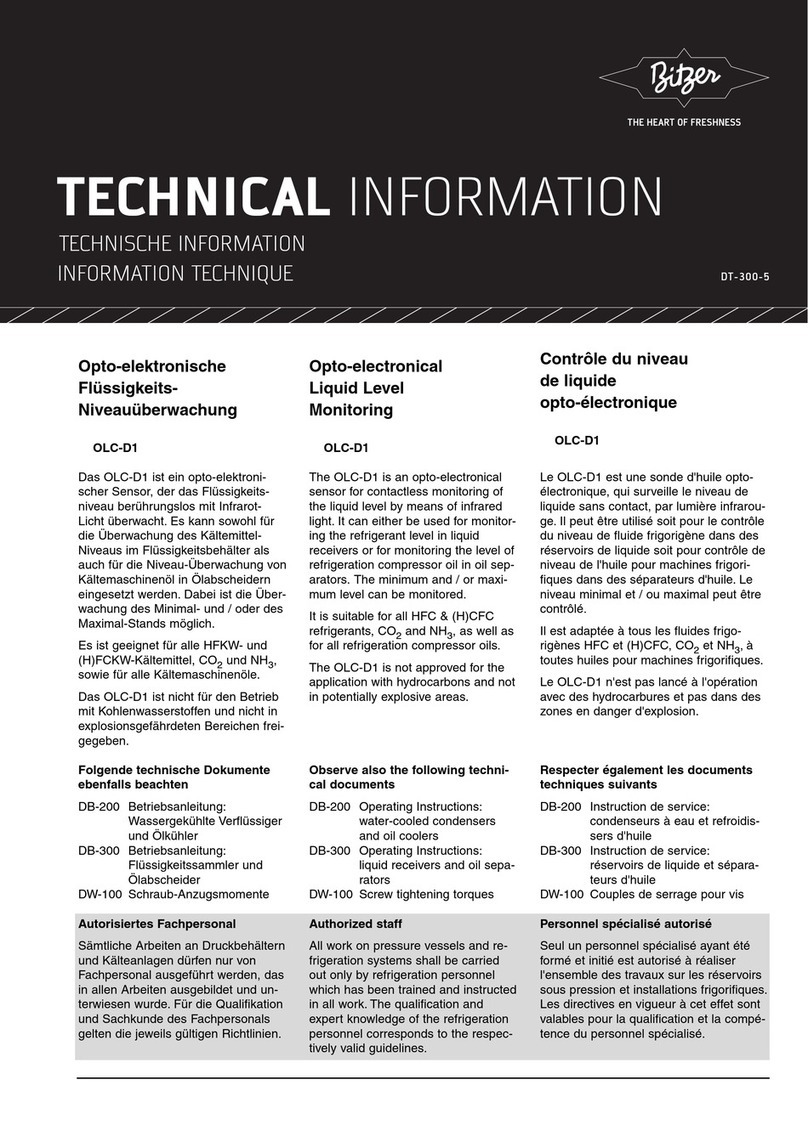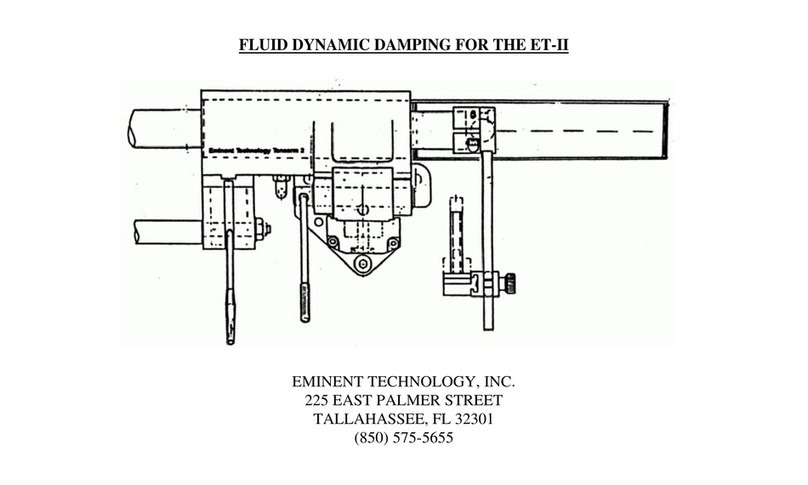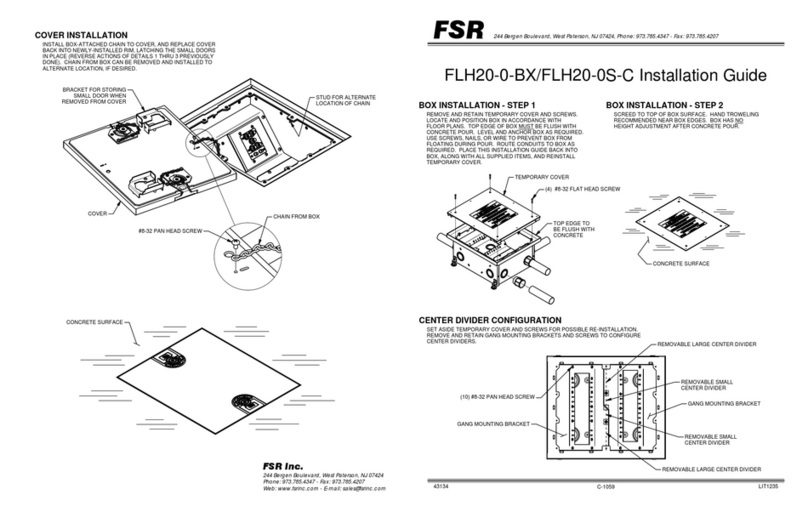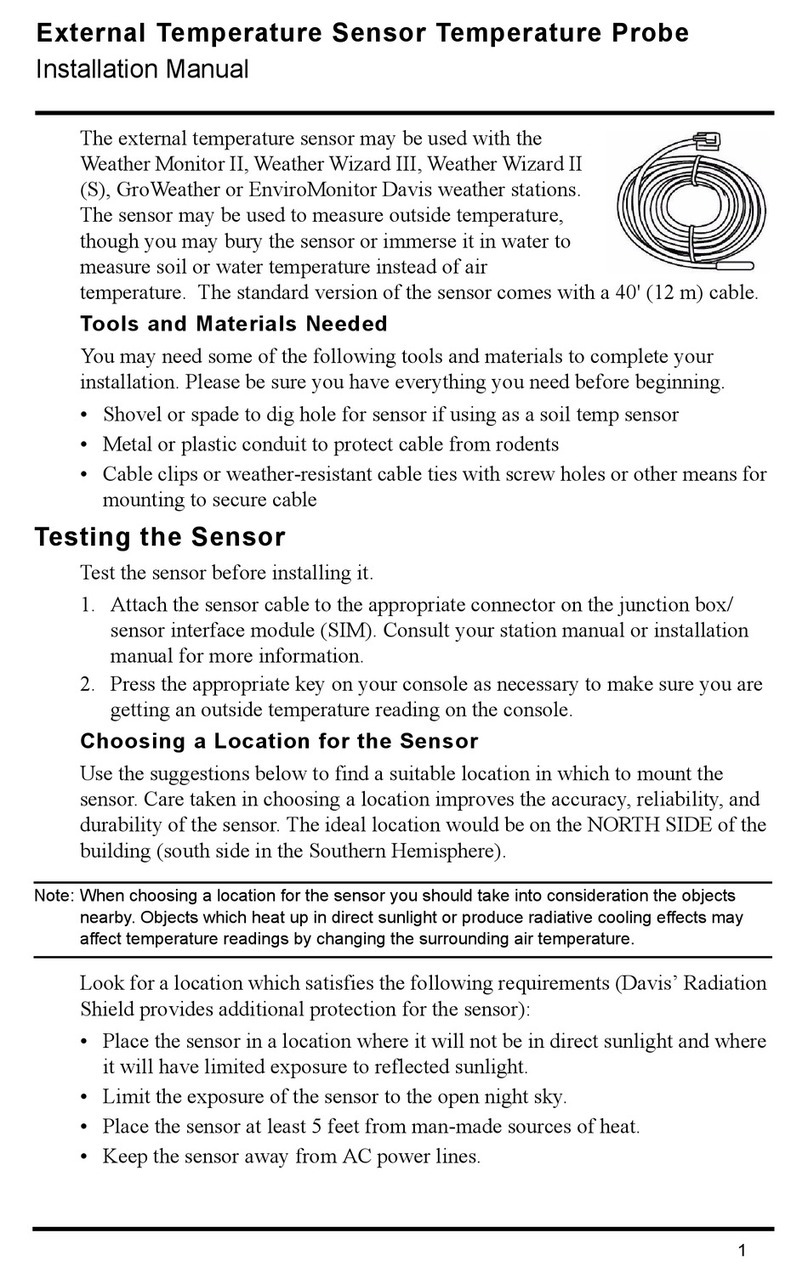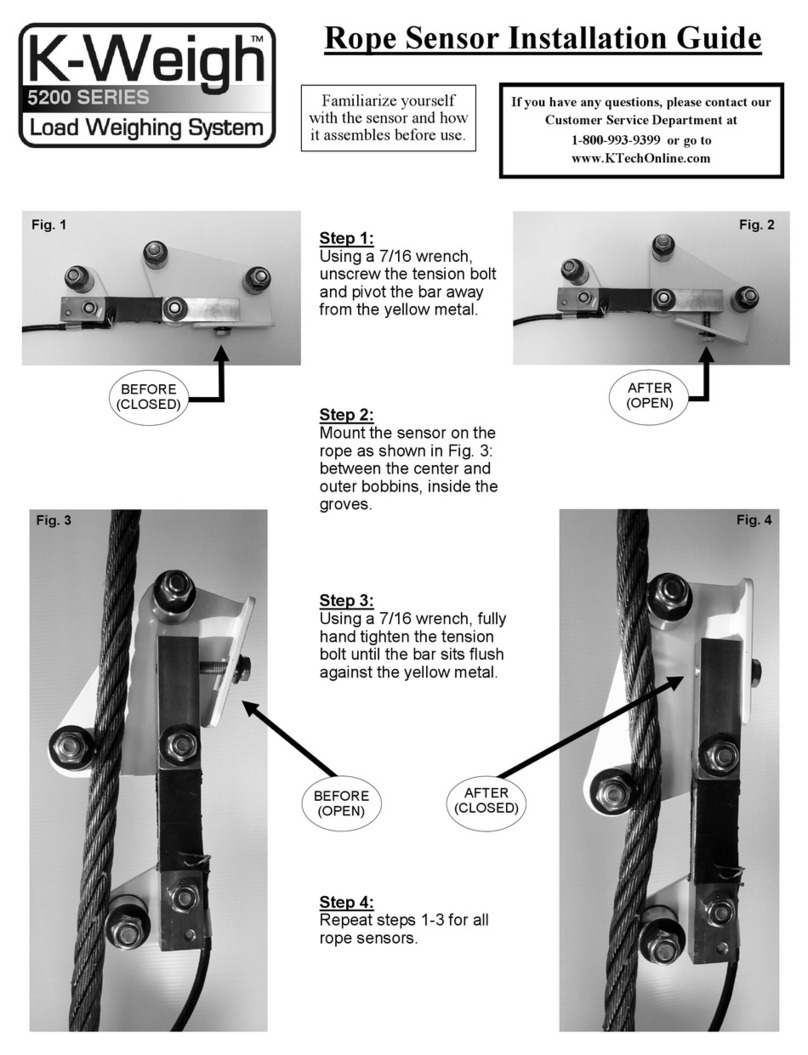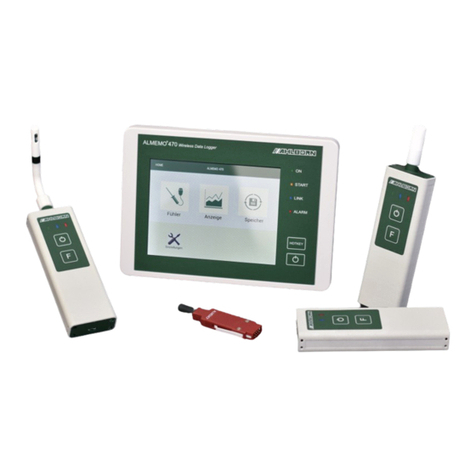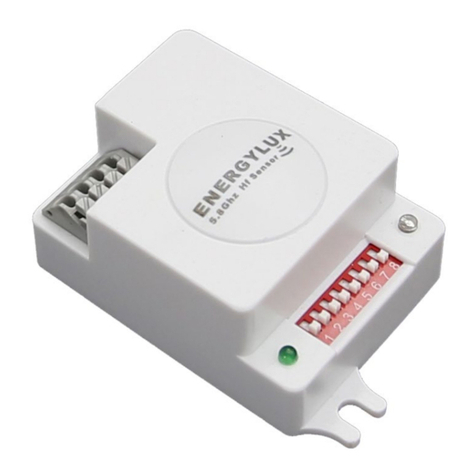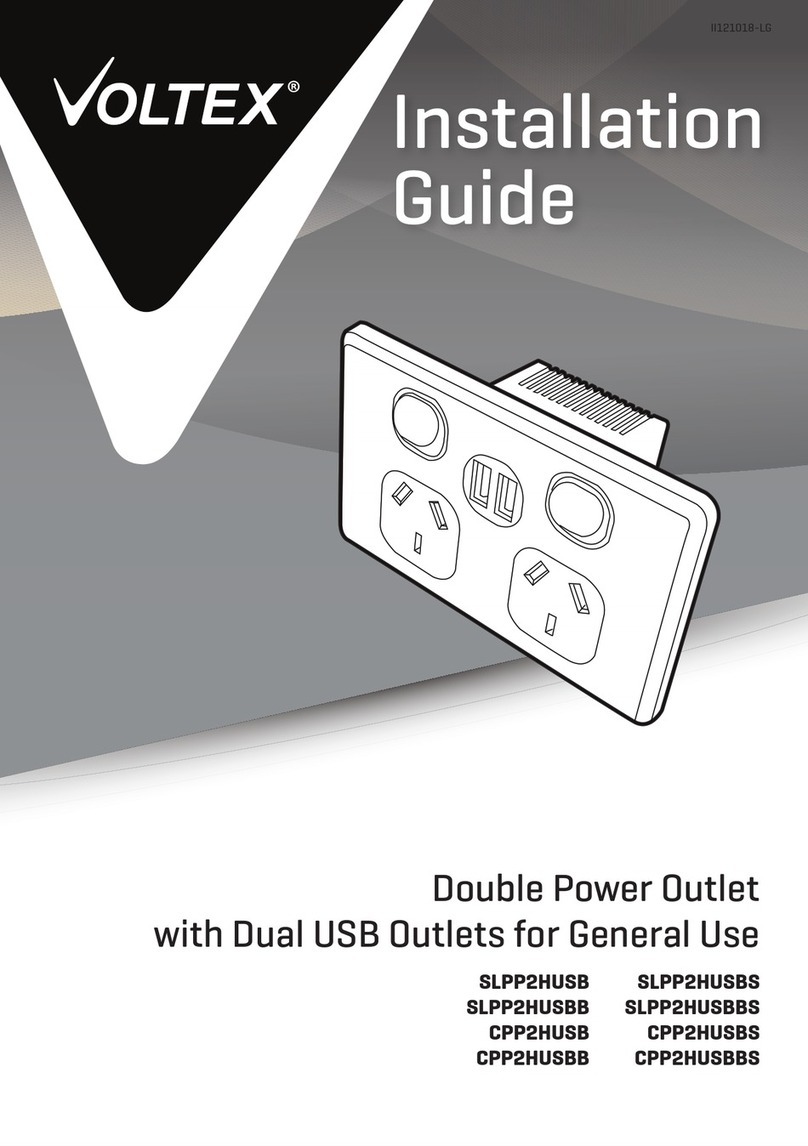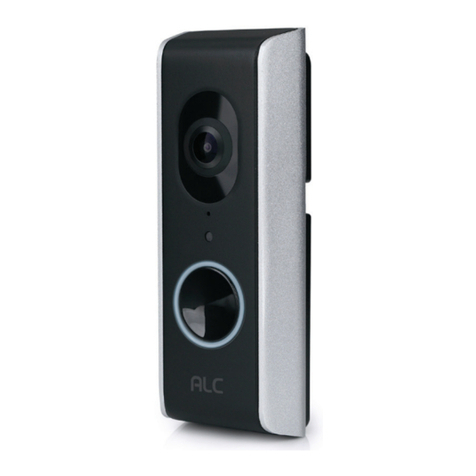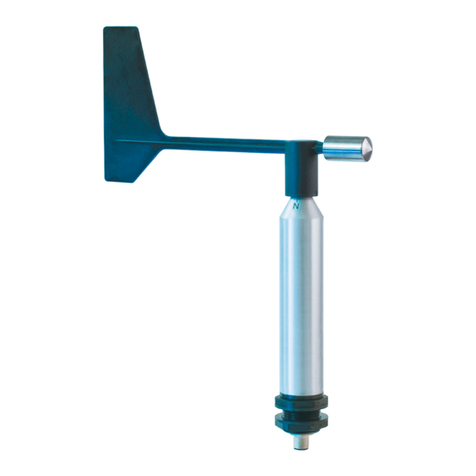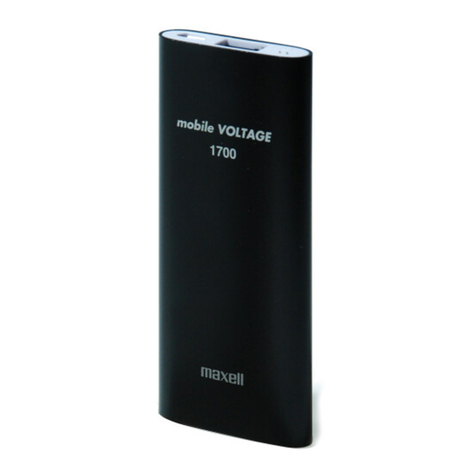Bitzer OW941B User manual

DB-200-5
Pressure vessels: Water-cooled condensers and oil coolers
Translation of the original Operating Instructions
English....................................................................................................................................................... 2
Druckbehälter: Wassergekühlte Verflüssiger und Ölkühler
Originalbetriebsanleitung
Deutsch ..................................................................................................................................................... 15
Réservoirs sous pression: Condenseurs à eau et refroidisseur d'huile
Traduction des instructions de service d'origine
Français..................................................................................................................................................... 28
K033N/H(P) .. K4803T(P)
K033N/HB(P) .. K4803TB(P)
OW401 .. OW941
OW401B .. OW941B
Installer
Monteur
Monteur

DB-200-52
Table of contents
1 Introduction............................................................................................................................................................3
2 Safety ....................................................................................................................................................................3
2.1 Authorized staff..............................................................................................................................................3
2.2 Residual hazards ...........................................................................................................................................3
2.3 Safety references...........................................................................................................................................3
2.3.1 General safety instructions ................................................................................................................ 3
3 Application ranges.................................................................................................................................................5
3.1 Plant registration............................................................................................................................................5
3.2 Conformity .....................................................................................................................................................6
4 Mounting................................................................................................................................................................6
4.1 Transporting the pressure vessel ..................................................................................................................6
4.2 Installation location ........................................................................................................................................6
4.3 Plant design ...................................................................................................................................................6
4.4 Refrigerant / oil side.......................................................................................................................................7
4.5 Coolant side...................................................................................................................................................7
4.6 Delivery condition ..........................................................................................................................................7
4.7 Connecting the pipelines ...............................................................................................................................7
4.7.1 Mounting the pressure relief valve..................................................................................................... 8
4.7.2 Connection for pressure gauge.......................................................................................................... 8
4.8 Connections for water-cooled condensers and oil coolers ............................................................................9
4.9 Connection dimensions for coolant pipes ....................................................................................................11
4.10 Coolant passes............................................................................................................................................12
5 Commissioning ....................................................................................................................................................12
5.1 Checking tightness ......................................................................................................................................12
5.2 Charging refrigerant.....................................................................................................................................12
5.3 Coolant ........................................................................................................................................................12
6 Operation.............................................................................................................................................................13
6.1 Standstill ......................................................................................................................................................13
7 Maintenance........................................................................................................................................................13
7.1 Cleaning.......................................................................................................................................................13
7.2 Extracting the refrigerant .............................................................................................................................13
7.3 Draining the oil.............................................................................................................................................14
8 Decommissioning ................................................................................................................................................14

DB-200-5 3
1 Introduction
This pressure equipment is designed for installation in
refrigeration systems according to the EC Machinery
Directive 2006/42/EC and the Pressure Equipment Dir-
ective 2014/68/EU. They may only be put into operation
if they have been installed in the machines according to
these Assembly/Operating Instructions and if the over-
all system complies with the applicable legal provisions
(applied standards: see Declaration of Conformity).
The pressure equipment has been built in accordance
with state-of-the-art methods and current regulations.
Particular importance was placed on user safety.
Always keep these operations instructions near the re-
frigeration system for the whole lifetime of the pressure
vessel.
2 Safety
2.1 Authorized staff
All work done on the pressure equipment and refrigera-
tion systems may only be performed by qualified and
authorized staff who have been trained and instructed
accordingly. Local regulations and guidelines apply with
respect to the staff's qualification and expertise.
2.2 Residual hazards
The pressure equipment may present unavoidable re-
sidual risks. That is why any person working on this
device must carefully read these Operating Instruc-
tions!
The following regulations shall apply:
• the relevant safety regulations and standards (for ex-
ample, EN 378)
• generally accepted safety rules,
• EU directives,
• national regulations.
2.3 Safety references
are instructions intended to prevent hazards. Safety ref-
erences must be stringently observed!
!
!
NOTICE
Safety reference to avoid situations which may
result in damage to a device or its equipment.
CAUTION
Safety reference to avoid a potentially hazard-
ous situation which may result in minor or mod-
erate injury.
WARNING
Safety reference to avoid a potentially hazard-
ous situation which could result in death or seri-
ous injury.
DANGER
Safety reference to avoid an imminently hazard-
ous situation which may result in death or seri-
ous injury.
2.3.1 General safety instructions
State of delivery
CAUTION
The pressure equipment is filled with a holding
charge: Overpressure 0.2.0.5 bar.
Risk of injury to skin and eyes.
Depressurise the pressure equipment!
Wear safety goggles!
DANGER
Risk of bursting the pressure device due to
mechanical stress.
Serious injuries are possible.
Connect the pipeline to the pressure unit without
stress!
DANGER
Risk of bursting of components and pipelines
due to hydraulic overpressure.
Serious injuries are possible.
Make sure not to exceed maximum admissible
pressures!

DB-200-54
For work on the pressure vessel after having put the
system into operation
CAUTION
Surface temperatures of more than 60°C or be-
low 0°C.
Risk of burns or frostbite.
Close off accessible areas and mark them.
Before performing any work on the pressure
device: switch off the installation and let it cool
down.
WARNING
The pressure equipment is under pressure!
Serious injuries are possible!
Depressurise the pressure equipment!
Wear safety goggles!
CAUTION
Refrigerant can be very cold
Risk of severe frostbite.
Avoid any contact with the refrigerant.
CAUTION
Oil can be very hot.
Serious burns are possible.
Allow the oil to cool.
For work on the pipework of the coolant, the following is
applicable
WARNING
Coolant can burn skin and eyes
Wear safety goggles!

DB-200-5 5
3 Application ranges
Type Fluid group ac-
cording to
2014/68/EU
(PED)
Safety group ac-
cording to EN 378
PS
Maximum
permitted
pressure
TS
Maximum and
minimum permit-
ted temperature
K033N/H(P)(B) .. K4803T(P)(B) 1 + 2 A1, A2, A2L, A3 33 bar 120°C / -10°C
OW401(B) .. OW941(B) 1 + 2 A1, A2, A2L, A3 28 bar 120°C / -10°C
OW401(B) .. OW941(B) Oil according to
ISO 6743-3, DIN 51503-1
28 bar 120°C / -10°C
Tab.1: Permitted fluids
Type Coolant PS
Maximum permitted oper-
ating pressure
TS
Maximum and minimum
permitted temperature
K033N/H(P) .. K4803T(P)
OW401 .. OW941
Water or brine 10 bar 95°C / -10°C
Anti-freeze!
K033N/H(P)B ..
K4803T(P)B
OW401B .. OW941B
Seawater, water or brine
For brine concentration see the BITZER SOFTWARE.
Tab.2: Coolants
!
!
NOTICE
Risk of corrosion!
The coolant must not react aggressively with the
pipe material of the pressure vessel or the ma-
terial of the end covers.
K033N/H(P) .. K4803T(P) / OW401 .. OW941
(Standard design)
pipes: copper, end covers: grey cast iron
K033N/H(P)B .. K4803T(P)B / OW401B .. OW941B
(seawater design)
pipes: copper-nickel-alloy, end covers: coated plastic
As a free service, BITZER will examine the suitability of
pipe materials if a water analysis is provided. The basis
for the examination is the current status of knowledge.
However, due to the complexity of the situation, no ab-
solute guarantee can be given that materials will be
corrosion proof.
3.1 Plant registration
Condensers and oil coolers are pressure vessels ac-
cording to the Pressure Equipment Directive 2014/68/
EU. For this reason the entire plant must be registered
with the supervisory authority and duly approved in ac-
cordance with the local regulations.
The category for the conformity assessment of each
pressure vessel is listed in the following table.
For the inspection before commissioning and recurring
inspections, national regulations must be considered
(for example the Industrial Safety Regulation (Be-
trSichV) in Germany).
In non EU countries local regulations must be complied
with.

DB-200-56
3.2 Conformity
Type Reservoir fluid capa-
city
dm3 (l)
Category according
to 2014/68/EU (PED)
Fluid group 2
Category according
to 2014/68/EU (PED)
Fluid group 1
Conformity assess-
ment depending on
the module
K033N/H(P)(B) 3.8 I II A2
K073H(P)(B) 3.4 I II A2
K123H(P)(B) 5.1 I II A2
K203H(P)(B) 11.8 II III B + D
K283H(P)(B) 11.3 II III B + D
K373H(P)(B) 14.5 II III B + D
K573H(P)(B) 29.4 II III B + D
K813H(P)(B) 27.7 II III B + D
K1053H(P)(B) 40.0 III IV B + D
K1353T(P)(B) 37.0 III IV B + D
K1973T(P)(B) 76.0 III IV B + D
K2923T(P)(B) 67.0 III IV B + D
K3803T(P)(B) 108.0 IV IV B + D
K4803T(P)(B) 98.0 III IV B + D
OW401(B) 10.5 II III B + D
OW501(B) 14.0 II III B + D
OW781(B) 18.0 II III B + D
OW941(B) 24.0 II III B + D
Tab.3: Category and evaluation of conformity
4 Mounting
4.1 Transporting the pressure vessel
Transport the pressure vessel screwed on a pallet. Lift
it using the eyebolts or the upper fastening brackets if
available.
DANGER
Suspended load!
Do not step under the machine!
4.2 Installation location
For outdoor installation, take suitable measures to pro-
tect the pressure vessel against corrosion (e.g. caused
by seawater or aggressive atmosphere) and low out-
side temperatures. Consultation with BITZER is recom-
mended.
!
!
NOTICE
Danger of freezing!
It is necessary to ensure that the temperature at
the location is high enough above the freezing
point of the coolant.
4.3 Plant design
If a compressor is mounted on the condenser:
!
!
NOTICE
No vibrations should be transmitted to the con-
denser!
Do not use the condenser as load-bearing ele-
ment! Mount the compressor on the condenser
only with damper elements!
The discharge line must be sufficiently elastic so that a
minimum of vibrations and movement is transferred to
the condenser. It may be necessary to fit flexible vibra-
tion dampers.

DB-200-5 7
Extreme pressure pulsations should be damped by fit-
ting pulsation mufflers.
4.4 Refrigerant / oil side
The whole system should be designed and operated in
order to guarantee that the maximum operating pres-
sure in the pressure vessel cannot be exceeded.
Pressure relief valves are essential if
• it is to be expected that the maximum operating
pressure will be exceeded due to external heat
sources (e.g. fire), or if
• the entire refrigerant charge of the plant is more than
90% of the receiver volume at 20°C (charge capa-
city). Receiver volume means the volume between
operationally lockable valves before and after a pres-
sure vessel. In case of two vessels being mounted in
series, it is the volume of both vessels and the con-
necting pipe.
In these cases relief devices should be installed that
lead the refrigerant or the oil to the low-pressure side of
the plant (emission reduction).
Safety switching device
According to the local regulations, safety switching
devices for pressure limiting must be provided.
4.5 Coolant side
The coolant should contain neither solids nor gases:
• Any solids must be separated out using suitable fil-
ters.
• The presence of gas should be avoided through suit-
able design measures.
Open circuits: The pressure vessel must not drain off
while not in use. For this reason, fit either
• a coolant regulator at the coolant outlet of the pres-
sure vessel, or
• a swan-neck at the outlet.
When using tap-water as a coolant, it is necessary to
check whether the installation of a pipe disconnector is
stipulated.
When cooling with seawater: If, due to local conditions,
the seawater in use can lead to scale or shell deposits,
suitable filters should be fitted. This also serves to pro-
tect the pipe lines from shell deposits.
4.6 Delivery condition
The pressure vessel is sealed in the delivery condition
and filled with inert gas. The inert gas overpressure is
0.2 .. 0.5 bar. All Rotalock and flange connections are
closed by blanking plates. These plates must be re-
moved before commissioning.
4.7 Connecting the pipelines
The pipe connections are suitable for pipes in all com-
mon dimensions in millimetres and inches. Brazed con-
nections have stepped diameters. The pipe will im-
merge more or less depending on its dimensions. If not
required the end with the largest diameter can be cut-
off.
DANGER
Risk of bursting the pressure device due to
mechanical stress.
Serious injuries are possible.
Connect the pipeline to the pressure unit without
stress!
First relieve the excess pressure from the pressure
vessel: Open the connections carefully.
WARNING
The pressure equipment is under pressure!
Serious injuries are possible!
Depressurise the pressure equipment!
Wear safety goggles!
Remove shut-off valves and/or solder connections.
!
!
NOTICE
Potential chemical reactions due to air penetra-
tion!
Install the open pressure vessel immediately in
the system.
Reseal the pressure vessel during installation breaks.
!
!
NOTICE
Do not overheat the shut-off valves!
Cool the valve body during and after the brazing
operation.
Maximum brazing temperature 700°C!
When brazing or welding, rinse the corresponding con-
ductive parts with inert gas.

DB-200-58
Clean the pipes
Use only pipelines and system components which are
• clean and dry inside (free from slag, metal filings,
rust and phosphate coatings) and
• which are delivered with an air-tight seal.
4.7.1 Mounting the pressure relief valve
Internal thread 3/8-18 NPTF: Screw in the pressure re-
lief valve.
External thread 1 1/4-12 UNF: Screw the pressure re-
lief valve into the adaptor. Then fasten the adaptor at
the pressure vessel with the union nut.
Available adaptors see figure 1, page 8.
366 005 03
SW 22
1/2"-14 NPTF
1 1/4"-12 UNF
366 005 04
SW 12
G 1/2
1 1/4"-12 UNF
366 005 05
SW 22
3/8"-18 NPTF
1 1/4"-12 UNF
366 005 01
SW 12
1 1/4"-12 UNF
1/2"-14 NPTF
366 005 02
SW 22
G 1/2
1 1/4"-12 UNF
Fig.1: Adaptors for the pressure relief valve
4.7.2 Connection for pressure gauge
Only use it for maintenance work, not during operation.
Never connect a pressure limiter to it!

DB-200-5 9
4.8 Connections for water-cooled condensers and oil
coolers
2a
6
7/ 1 6 " - 2 0 U N F
21
1 2
1 0
1 0 3 a / 3 b
4 b
4 a / 3 b
81 11 1
T O P
7
Fig.2: K033N/H(P)(B) .. K373H(P)(B)
2
5
4 P a s s
IN
O U T
T O P
1 0
6
7 / 1 6 " - 2 0 U N F
2 a 3 a
1 1
14 a
1 0
1 2
8 1 1
7
Fig.3: K573H(P)(B) + K1053H(P)
TO P
4P a s s
I N
O U T
8
51 0 6
7 / 1 6 " - 2 0 U N F
3 a2 a
14 a
1 0
1 2
21 1 1 1
7
Fig.4: K1053H(P)B + K1353T(P)(B) .. K4803T(P)(B)

DB-200-510
TO P
I N
O U T
2
5
7 / 1 6 " - 2 0 U N F
6
7 / 1 6 " - 2 0 U N F
61
3 a / 3 b1 0
4 a / 3 b
4 b 9 1 0
Fig.5: OW401(B) .. OW941(B)
Connection positions
1 Refrigerant or oil inlet
2 Refrigerant or oil outlet
2a Alternative refrigerant outlet (only for sea
water version)
3 Coolant inlet
3a 4 or 6 pass
3b 2 or 3 pass
4 Coolant outlet
4a 4 or 6 pass
4b 2 or 3 pass
5 Coolant drain
6 Connection for pressure gauge
7 Connection for pressure relief valve
Internal thread 3/8-18 NPTF, external
thread 1 1/4-12 UNF
8 Sight glass
9 Oil drain
10 End cover, removable
11 Fixing rail, bottom
12 Fixing rail, top
Tab.4: Connection positions
Dimensions (if specified) may have tolerances accord-
ing to ENISO13920-B.
The legend applies to all water-cooled BITZER con-
densers and oil coolers and contains connection posi-
tions that do not occur in every series.

DB-200-5 11
4.9 Connection dimensions for coolant pipes
Screw the pipes in and make sure that the screwed
nipples do not turn.
Joining threads (3) and (4):
Standard design internal thread (G..) or flange (DN..),
seawater-resistant design nipple with internal thread
(G..) or flange (DN..)
Types 1 Ø
mm / inches
2 Ø
mm /
inches
2a 3
4 pass
3b
2 pass
4a
4 pass
4b
2 pass
5 9 Ø
mm
K033N/H(P)
(B)
12 / 1/2 10 3/8 - G 1/2 2 x G 1/2 G 1/2 G 3/4 - -
K073H(P)(B) 12 / 1/2 10 3/8 - G 1/2 2 x G 1/2 G 1/2 G 3/4 - -
K123H(P)(B) 16 / 5/8 12 1/2 (1 1/4 -
12 UNF)
G 1/2 2 x G 1/2 G 1/2 G 3/4 - -
K203H(P)(B) 16 / 5/8 16 5/8 (1 1/4 -
12 UNF)
G 3/4 2 x G 3/4 G 3/4 G 1 - -
K283H(P)(B) 22 / 7/8 22 7/8 (1 1/4 -
12 UNF)
G 3/4 2 x G 3/4 G 3/4 G 1 - -
K373H(P)(B) 28 / 1 1/8 22 7/8 (1 3/4 -
12 UNF)
G 3/4 2 x G 3/4 G 1 1/4 G 1 - -
K573H(P)(B) 35 / 1 3/8 (1 3/4 -
12 UNF)
G 1 1/4 G 2 G 3/4 G 2 G 1/4
(G 1/2)
-
K813H(P)(B) 35 / 1 3/8 28 1 1/8 (1 3/4 -
12 UNF)
G 1 1/4 G 2 G 1 1/4 G 2 G 1/4
(G 1/2)
-
K1053H(P)
(B)
42 / 1 5/8 35 1 3/8 (1 3/4 -
12 UNF)
G 1 1/4 G 2 G 1 1/4 G 2 G 1/4
(G 1/2)
-
K1353T(P)
(B)
42 / 1 5/8 35 1 3/8 (1 3/4 -
12 UNF)
G 1 1/4 G 2 G 1 1/4 G 2 G 1/4
(G 1/2)
-
K1973T(P)
(B)
54 / 2 1/8 42 1 5/8 (2 1/4 -
12 UNF)
G 2 DN 65 G 2 DN 65 G 1/4
(G 1/2)
-
K2923T(P)
(B)
54 / 2 1/8 54 2 1/8 (112 x
112)
G 2 DN 65 G 2 DN 65 G 1/4
(G 1/2)
-
K3803T(P)
(B)
76 / 3 1/8 76 3 1/8 (140 x
140)
DN 80 DN 100 DN 80 DN 100 G 1/4
(G 1/2)
-
K4803T(P)
(B)
76 / 3 1/8 76 3 1/8 (140 x
140)
DN 80 DN 100 DN 80 DN 100 G 1/4
(G 1/2)
-
OW401(B) 22 / 7/8 22 7/8 - G 3/4 2 x G 3/4 G 3/4 G 1 - 10
OW501(B) 22 / 7/8 22 7/8 - G 3/4 2 X G 3/4 G 3/4 G 1 - 10
6 pass 3 pass 6 pass 3 pass
OW781(B) 28 / 1 1/8 28 1 1/8 - G 1 2 x G 1 G 1 G 1 1/2 G 1/4
(G 1/2)
10
OW941(B) 35 / 1 3/8 35 1 3/8 - G 1 2 x G 1 G 1 G 1 1/2 G 1/4
(G 1/2)
10
Tab.5: Connection dimensions for coolant pipes

DB-200-512
4.10 Coolant passes
Depending on the end covers, the coolant passes the
pressure vessel 2, 3, 4, or 6 times.
K573H(B) .. K4803T(B): 4-pass end covers are moun-
ted as standard. Alternative: 2-pass end cover
At all other devices it can be chosen between 4 or 2
and 6 or 3 passes at the same end cover. This de-
pends the positions to which the coolant pipes are
mounted.
Fig.6: K033N/H(P)(B) .. K373H(P)(B): 4 or 2 passes at the same
cover is possible depending on the connection, OW781(B) ..
OW941(B): 6 or 3 passes at the same cover is possible depending on
the connection
Fig.7: K573H(P)(B) .. K4803T(P)(B): different end covers for 4 or 2
passes
Fig.8: OW781(B) .. OW941(B): 6 or 3 passes at the same cover is
possible depending on connection
5 Commissioning
The pressure equipment was tested in the factory as a
single unit. After installation, the tightness of the con-
nections and of the piping system must be tested
again.
5.1 Checking tightness
Check the refrigerant circuit (assembly) for tightness,
as a whole or in parts, according to EN378-2 (or other
applicable equivalent safety standards). For this, create
an overpressure, preferably using dried nitrogen.
DANGER
Risk of bursting due to excessive pressure!
The pressure applied during the test must never
exceed the maximum permitted values!
Test pressure: 1.1-fold of the maximum allow-
able pressure (see name plate). Make a distinc-
tion between the high-pressure and low-pres-
sure sides!
5.2 Charging refrigerant
Use only allowed refrigerants, see chapter Application
ranges, page 5.
DANGER
Risk of bursting of components and pipelines
due to hydraulic excess pressure while feeding
liquid.
Serious injuries are possible.
Avoid overcharging the system with refrigerant
under all circumstances!
WARNING
Risk of bursting due to counterfeit refrigerants!
Serious injuries are possible!
Purchase refrigerants only from reputable man-
ufacturers and reliable distributors!
!
!
NOTICE
Risk of wet operation during liquid feeding!
Measure out extremely precise quantities!
Keep the oil temperature above 40°C.
◦ Before charging with refrigerant: Put the coolant cir-
cuit into operation. Otherwise the coolant might
freeze.
◦ Check the oil level in the compressor.
• Charge condenser or receiver, on systems with
flooded evaporator, maybe also the evaporator dir-
ectly with liquid refrigerant.
• Blends must be taken out of the charging cylinder as
a solid liquid.
• After commissioning, it may be necessary to add re-
frigerant: While the compressor is running, charge
with refrigerant on the suction side, preferably at the
evaporator inlet.
5.3 Coolant
The maximum permitted coolant volume flow is indic-
ated in the BITZER SOFTWARE. This value refers to
clean and gas-free water with a flow velocity of 2.5 m/s.
The pressure vessel can be operated with water con-
taining a slight amount of solids or gases with a flow

DB-200-5 13
speed of up to about 1.5 m/s. However, positive experi-
ence must first have been gained from comparable ap-
plications.
Pressure test / test operation
A pressure test should be carried out with a closed
coolant circuit (maximum operating pressure: 10 bar).
With an open circuit a short test run is sufficient.
Corrosion
If the plant is not operated for a long time after pressure
test or test run, the pipes must be protected against
corrosion by:
• pressure test with clean water or dry gas,
• test run with clean water.
If this is not possible, the pipes must be cleaned: Flush
pipes and dry them or fill them with clean water.
Running-in time with open cooling circuits (corrosion
protection)
Within the first months, coolant should constantly flow
through the pressure vessel so that a protective layer
can be built up. During the shut-off periods, a low flow
rate is sufficient.
6 Operation
The pressure equipment must be checked at regular in-
tervals by qualified and authorised staff. The test inter-
vals depend on the mode of operation. They must be
defined by the system operator.
6.1 Standstill
!
!
NOTICE
Risk of corrosion!
During shut-off periods, the coolant side of the
pressure vessel must be protected against cor-
rosion! This applies especially with aggressive
coolants, e.g. brackish water, water containing
solids or liable to biofouling.
Any contamination of the coolant pipe system should
be removed before any long shut-off periods. This ap-
plies especially in cases of organic materials and shell
deposits. With aggressive or corrosive coolants, the
pipe system must be cleaned and dried or filled with
clean water.
7 Maintenance
The pressure vessels are designed for a maintenance-
free operation. However, it is advisable to clean the
coolant pipes regularly. The contamination depends dir-
ectly on the quality of the coolant used.
• Materials in the coolant in dissolved or solid form can
deposit in the pipes, e.g. lime, sand, algae or silt.
• Organic materials such as algae can build up local
elements. In the worst case, this can lead to pitting.
• With seawater cooling, shells can also grow on the
insides of the pipes.
7.1 Cleaning
WARNING
The pressure equipment is under pressure!
Serious injuries are possible!
Depressurise the pressure equipment!
Wear safety goggles!
WARNING
Coolant can burn skin and eyes
Wear safety goggles!
Suitable cleaning methods and cleaning intervals de-
pend on the type and extent of contamination.
!
!
NOTICE
Risk of corrosion!
Cleaning agent must not react with the pipe ma-
terial!
• Soft deposits such as algae or silt: Brush off care-
fully. Use cleaning agent if necessary. Rinse well af-
terwards.
• Solid coatings, such as lime or shells: Rinse with
suitable solvent. The use of citric acid is very effect-
ive and environmentally friendly:
– Fill with a 25% citric acid / water solution.
– Allow to react for 24 hours. Occasional circulation
by pumping increases the effect.
– Afterwards, flush the released materials out of the
pressure vessel.
Dispose of contaminated coolant properly!
7.2 Extracting the refrigerant
• For repair work at the liquid receivers or when de-
commissioning them, extract or pump down the refri-
gerant as a liquid if possible.
• Dispose of the refrigerant properly.

DB-200-514
CAUTION
Refrigerant can be very cold
Risk of severe frostbite.
Avoid any contact with the refrigerant.
For this, observe the following information:
Monitor the boiling temperature of the refrigerant. With
water as a coolant, for example, it may not fall below
4°C.
If the refrigerant is extracted as a gas, the coolant cir-
cuit must also be in operation. The temperature of the
coolant must be monitored where the refrigerant is
sucked off and increased if necessary.
Dispose of the refrigerant properly.
7.3 Draining the oil
Before decommissioning the pressure equipment or
performing repair work, shut off the refrigerant pipes
and oil pipes before and behind the oil cooler. Keep a
pan ready. Drain oil, collect oil and dispose of it prop-
erly.
WARNING
The pressure equipment is under pressure!
Serious injuries are possible!
Depressurise the pressure equipment!
Wear safety goggles!
8 Decommissioning
In case of damage, the pressure vessel must be separ-
ated from the refrigerator system and replaced. For
this, extract the refrigerant and remove the oil.
Dispose of contaminated substances properly! Chlor-
ine-containing oil is hazardous waste.

DB-200-5 15
Inhaltsverzeichnis
1 Einleitung.............................................................................................................................................................16
2 Sicherheit.............................................................................................................................................................16
2.1 Autorisiertes Fachpersonal ..........................................................................................................................16
2.2 Restgefahren ...............................................................................................................................................16
2.3 Sicherheitshinweise.....................................................................................................................................16
2.3.1 Allgemeine Sicherheitshinweise ...................................................................................................... 16
3 Anwendungsbereiche..........................................................................................................................................18
3.1 Anlage anmelden.........................................................................................................................................18
3.2 Konformität ..................................................................................................................................................19
4 Montage...............................................................................................................................................................19
4.1 Druckbehälter transportieren .......................................................................................................................19
4.2 Aufstellort.....................................................................................................................................................19
4.3 Aufbau der Anlage .......................................................................................................................................19
4.4 Kältemittel- bzw. Ölseite ..............................................................................................................................20
4.5 Kühlmediumseite .........................................................................................................................................20
4.6 Lieferzustand ...............................................................................................................................................20
4.7 Rohrleitungen anschliessen.........................................................................................................................20
4.7.1 Druckentlastungsventil montieren.................................................................................................... 21
4.7.2 Anschluss für Manometer ................................................................................................................ 21
4.8 Anschlüsse wassergekühlte Verflüssiger und Ölkühler ...............................................................................22
4.9 Anschlussmaße für Kühlmediumrohre.........................................................................................................24
4.10 Kühlmedium-Durchgänge............................................................................................................................25
5 In Betrieb nehmen ...............................................................................................................................................25
5.1 Dichtheit prüfen............................................................................................................................................25
5.2 Kältemittel einfüllen......................................................................................................................................25
5.3 Kühlmedium.................................................................................................................................................25
6 Betrieb .................................................................................................................................................................26
6.1 Stillstand ......................................................................................................................................................26
7 Wartung ...............................................................................................................................................................26
7.1 Reinigung.....................................................................................................................................................26
7.2 Kältemittel absaugen ...................................................................................................................................27
7.3 Öl ablassen..................................................................................................................................................27
8 Außer Betrieb nehmen ........................................................................................................................................27

DB-200-516
1 Einleitung
Diese Druckgeräte sind zum Einbau in Kälteanlagen
entsprechend der EU-Maschinenrichtlinie 2006/42/EG
und der EU-Druckgeräterichtlinie 2014/68/EU vorgese-
hen. Sie dürfen nur in Betrieb genommen werden,
wenn sie gemäß vorliegender Montage-/Betriebsanlei-
tung in diese Maschinen eingebaut worden sind und als
Ganzes mit den entsprechenden gesetzlichen Vor-
schriften übereinstimmen (angewandte Normen: siehe
Konformitätserklärung).
Die Druckgeräte sind nach dem aktuellen Stand der
Technik und entsprechend den geltenden Vorschriften
gebaut. Auf die Sicherheit der Anwender wurde beson-
derer Wert gelegt.
Diese Betriebsanleitung während der gesamten Druck-
behälterlebensdauer an der Kälteanlage verfügbar hal-
ten.
2 Sicherheit
2.1 Autorisiertes Fachpersonal
Sämtliche Arbeiten an Druckgeräten und Kälteanlagen
dürfen nur von Fachpersonal ausgeführt werden, das in
allen Arbeiten ausgebildet und unterwiesen wurde. Für
die Qualifikation und Sachkunde des Fachpersonals
gelten die jeweils landesüblichen Vorschriften und
Richtlinien.
2.2 Restgefahren
Vom Druckgerät können unvermeidbare Restgefahren
ausgehen. Jede Person, die an diesem Gerät arbeitet,
muss deshalb diese Betriebsanleitung sorgfältig lesen!
Es gelten zwingend
• die einschlägigen Sicherheitsvorschriften und Nor-
men (z.B. EN 378)
• die allgemein anerkannten Sicherheitsregeln,
• die EU-Richtlinien,
• nationale Vorschriften.
2.3 Sicherheitshinweise
sind Anweisungen um Gefährdungen zu vermeiden. Si-
cherheitshinweise genauestens einhalten!
!
!
HINWEIS
Sicherheitshinweis um eine Situation zu vermei-
den, die die Beschädigung eines Geräts oder
dessen Ausrüstung zur Folge haben könnte.
VORSICHT
Sicherheitshinweis um eine potentiell gefährli-
che Situation zu vermeiden, die eine geringfügi-
ge oder mäßige Verletzung zur Folge haben
könnte.
WARNUNG
Sicherheitshinweis um eine potentiell gefährli-
che Situation zu vermeiden, die den Tod oder
eine schwere Verletzung zur Folge haben könn-
te.
GEFAHR
Sicherheitshinweis um eine unmittelbar gefährli-
che Situation zu vermeiden, die eine schwere
Verletzung oder den Tod zur Folge hat.
2.3.1 Allgemeine Sicherheitshinweise
Auslieferungszustand
VORSICHT
Das Druckgerät ist mit Schutzgas gefüllt: Über-
druck 0,2..0,5 bar.
Verletzungen von Haut und Augen möglich.
Druckgerät auf drucklosen Zustand bringen!
Schutzbrille tragen!
GEFAHR
Berstgefahr des Druckgeräts durch mechani-
sche Spannungen.
Schwere Verletzungen möglich.
Rohrleitungen spannungsfrei an das Druckgerät
montieren!
GEFAHR
Berstgefahr von Bauteilen und Rohrleitungen
durch hydraulischen Überdruck.
Schwere Verletzungen möglich.
Maximal zulässige Drücke nicht überschreiten!

DB-200-5 17
Bei Arbeiten am Druckbehälter, nachdem die Anlage in
Betrieb genommen wurde
VORSICHT
Oberflächentemperaturen von über 60°C bzw.
unter 0°C.
Verbrennungen und Erfrierungen möglich.
Zugängliche Stellen absperren und kennzeich-
nen.
Vor Arbeiten am Druckgerät: Anlage ausschal-
ten und abkühlen lassen.
WARNUNG
Druckgerät steht unter Druck!
Schwere Verletzungen möglich!
Druckgerät auf drucklosen Zustand bringen!
Schutzbrille tragen!
VORSICHT
Kältemittel kann sehr kalt sein.
Schwere Erfrierungen möglich.
Nicht in Kontakt mit Kältemittel kommen.
VORSICHT
Öl kann sehr heiß sein.
Schwere Verbrennungen möglich.
Öl abkühlen lassen.
Bei Arbeiten am Rohrsystem des Kühlmediums gilt
zusätzlich
WARNUNG
Kühlmedium kann Haut und Augen verätzen!
Schutzbrille tragen!

DB-200-518
3 Anwendungsbereiche
Typ Fluidgruppe
nach 2014/68/
EU (PED)
Sicherheitsgruppe
nach EN 378
PS
Maximal zu-
lässiger
Druck
TS
Zulässige maxi-
male und minima-
le Temperatur
K033N/H(P)(B) .. K4803T(P)(B) 1 + 2 A1, A2, A2L, A3 33 bar 120°C / -10°C
OW401(B) .. OW941(B) 1 + 2 A1, A2, A2L, A3 28 bar 120°C / -10°C
OW401(B) .. OW941(B) Öl entsprechend
ISO 6743-3, DIN 51503-1
28 bar 120°C / -10°C
Tab.1: Zulässige Fluide
Typ Kühlmedium PS
Maximal zulässiger Be-
triebsdruck
TS
Zulässige maximale und
minimale Temperatur
K033N/H(P) .. K4803T(P)
OW401 .. OW941
Wasser oder Kühlsole 10 bar 95°C / -10°C
Frostschutz!
K033N/H(P)B ..
K4803T(P)B
OW401B .. OW941B
Seewasser, Wasser oder
Kühlsole
Kühlsolekonzentration siehe BITZER SOFTWARE.
Tab.2: Kühlmedien
!
!
HINWEIS
Korrosionsgefahr!
Das Kühlmedium darf gegenüber dem Rohrma-
terial der Druckbehälter und dem Werkstoff der
Umlenkdeckel nicht aggressiv sein.
K033N/H(P) .. K4803T(P) / OW401 .. OW941
(Standard-Ausführung)
Rohre: Kupfer, Umlenkdeckel: Grauguss
K033N/H(P)B .. K4803T(P)B / OW401B .. OW941B
(Seewasser-Ausführung)
Rohre: Kupfer-Nickel-Legierung, Umlenkdeckel: Kunst-
stoff beschichtet
Als kostenlosen Service prüft BITZER die Eignung der
Rohrmaterialien gegen Vorlage einer Wasseranalyse.
Prüf-Grundlage ist der aktuelle Stand der Erfahrungen.
Eine absolute Gewährleistung auf Korrosionssicherheit
kann jedoch aufgrund der komplexen Verhältnisse nicht
gegeben werden.
3.1 Anlage anmelden
Verflüssiger und Ölkühler sind Druckgeräte im Sinne
der EU-Druckgeräterichtlinie 2014/68/EU. Deshalb
muss die gesamte Anlage entsprechend den örtlichen
Vorschriften bei der Aufsichtsbehörde angemeldet und
von ihr genehmigt werden.
Die Kategorie für die Konformitätsbewertung des jewei-
ligen Druckbehälters ist in der folgenden Tabelle aufge-
listet.
Für die Prüfung vor Inbetriebnahme und wiederkehren-
de Prüfungen sind nationale Vorschriften zu beachten
(z.B. die BetrSichV in Deutschland).
In Ländern außerhalb der EU müssen jeweils die dort
gültigen Vorschriften eingehalten werden.

DB-200-5 19
3.2 Konformität
Typ Behälterinhalt
dm3 (l)
Kategorie nach
2014/68/EU (PED)
Fluidgruppe 2
Kategorie nach
2014/68/EU (PED)
Fluidgruppe 1
Konformitätsbewer-
tung nach Modul
K033N/H(P)(B) 3,8 I II A2
K073H(P)(B) 3,4 I II A2
K123H(P)(B) 5,1 I II A2
K203H(P)(B) 11,8 II III B + D
K283H(P)(B) 11,3 II III B + D
K373H(P)(B) 14,5 II III B + D
K573H(P)(B) 29,4 II III B + D
K813H(P)(B) 27,7 II III B + D
K1053H(P)(B) 40,0 III IV B + D
K1353T(P)(B) 37,0 III IV B + D
K1973T(P)(B) 76,0 III IV B + D
K2923T(P)(B) 67,0 III IV B + D
K3803T(P)(B) 108,0 IV IV B + D
K4803T(P)(B) 98,0 III IV B + D
OW401(B) 10,5 II III B + D
OW501(B) 14,0 II III B + D
OW781(B) 18,0 II III B + D
OW941(B) 24,0 II III B + D
Tab.3: Kategorie und Konformitätsbewertung
4 Montage
4.1 Druckbehälter transportieren
Druckbehälter verschraubt auf der Palette transportie-
ren. Wenn vorhanden an Transportösen oder oberen
Befestigungswinkeln anheben.
GEFAHR
Schwebende Last!
Nicht unter die Maschine treten!
4.2 Aufstellort
Bei Außenaufstellung Druckbehälter durch geeignete
Maßnahmen vor Korrosion (z. B. durch Seewasser
oder aggressive Atmosphäre) und vor niedrigen Au-
ßentemperaturen schützen. Ggf. empfiehlt sich Rück-
sprache mit BITZER.
!
!
HINWEIS
Einfriergefahr!
Es muss sichergestellt sein, dass die Tempera-
tur am Aufstellort ausreichend oberhalb dem
Gefrierpunkt des Kühlmediums liegt.
4.3 Aufbau der Anlage
Bei Montage eines Verdichters auf den Verflüssiger:
!
!
HINWEIS
Auf den Verflüssiger dürfen keine Schwingun-
gen übertragen werden!
Verflüssiger nicht als tragendes Element ver-
wenden! Verdichter nur mit Dämpfungselemen-
ten auf Verflüssiger montieren!
Die Druckleitung muss ausreichend elastisch sein, da-
mit auf den Verflüssiger möglichst wenig Schwingun-
gen und Bewegungen des Verdichters übertragen wer-
den. Eventuell kann es notwendig sein, flexible Schwin-
gungsausgleicher einzubauen.

DB-200-520
Extreme Druckpulsationen sollten durch den Einbau
von Pulsationsdämpfern gedämpft werden.
4.4 Kältemittel- bzw. Ölseite
Die gesamte Anlage sollte so ausgelegt und betrieben
werden, dass der maximale Betriebsdruck im Druckbe-
hälter nicht überschritten werden kann.
DruckentlastungsVentile sind zwingend erforderlich,
wenn
• damit zu rechnen ist, dass der maximale Betriebs-
druck durch äußere Wärmequellen überschritten
wird (z. B. Brand) oder wenn
• die gesamte Kältemittelfüllung der Anlage größer ist
als 90% des Behälterinhalts bei 20°C (Fassungsvo-
lumen). Der Behälterinhalt ist das Volumen zwischen
betriebsmäßig absperrbaren Ventilen vor und nach
einem Druckbehälter. Bei Behältern, die direkt hin-
tereinander montiert sind, gilt das Volumen aller Be-
hälter und der Leitung.
In diesen Fällen sollten bevorzugt Überströmeinrichtun-
gen eingesetzt werden, die das Kältemittel oder das Öl
auf die Niederdruckseite der Anlage leiten (Emissions-
minderung).
Sicherheitsschalteinrichtung
Entsprechend den örtlichen Vorschriften müssen druck-
begrenzende Sicherheitsschalteinrichtungen vorgese-
hen werden.
4.5 Kühlmediumseite
Das Kühlmedium sollte weder Feststoffe noch Gasan-
teile enthalten:
• Feststoffe müssen durch geeignete Filter abgeschie-
den werden.
• Gasanteile sollten durch konstruktive Maßnahmen
vermieden werden.
Offene Kreisläufe: Der Druckbehälter darf sich während
des Stillstands nicht entleeren. Dazu entweder
• einen Kühlmediumregler am Kühlmediumaustritt des
Druckbehälters einbauen
• oder einen Schwanenhals am Auslauf.
Bei Leitungswasser als Kühlmedium muss geprüft wer-
den, ob der Einbau eines Rohrtrenners vorgeschrieben
wird.
Bei Kühlung mit Seewasser: Wenn das verwendete
Seewasser aufgrund der örtlichen Bedingungen zu Mu-
schelbildung führen kann, sollten geeignete Filter ein-
gebaut werden. Dies dient auch zum Schutz der Rohr-
leitungen vor Muschelbefall.
4.6 Lieferzustand
Der Druckbehälter ist im Lieferzustand verschlossen
und mit Schutzgas befüllt. Der Schutzgasüberdruck be-
trägt 0,2 .. 0,5 bar. Alle Rotalock- und Flanschanschlüs-
se sind durch Verschlussscheiben verschlossen. Diese
müssen vor Inbetriebnahme entfernt werden.
4.7 Rohrleitungen anschliessen
Die Rohranschlüsse sind so ausgeführt, dass Rohre in
den gängigen Millimeter- und Zollabmessungen ver-
wendet werden können. Lötanschlüsse haben gestufte
Durchmesser. Je nach Abmessung wird das Rohr mehr
oder weniger tief eintauchen. Im Bedarfsfall kann das
Buchsenende mit dem größeren Durchmesser auch
abgesägt werden.
GEFAHR
Berstgefahr des Druckgeräts durch mechani-
sche Spannungen.
Schwere Verletzungen möglich.
Rohrleitungen spannungsfrei an das Druckgerät
montieren!
Zuerst Überdruck aus dem Druckbehälter ablassen:
Anschlüsse vorsichtig öffnen.
WARNUNG
Druckgerät steht unter Druck!
Schwere Verletzungen möglich!
Druckgerät auf drucklosen Zustand bringen!
Schutzbrille tragen!
Absperrventile und / oder Lötanschlüsse entfernen.
!
!
HINWEIS
Chemische Reaktionen bei Lufteintritt möglich!
Offenen Druckbehälter umgehend in die Anlage
einbauen.
Druckbehälter während Montageunterbrechungen wie-
der verschliessen.
!
!
HINWEIS
Absperrventile nicht überhitzen!
Während und nach dem Löten Ventilkörper küh-
len.
Maximale Löttemperatur 700°C!
Während der Löt- oder Schweißarbeiten die entspre-
chenden Leitungsteile mit Schutzgas spülen.
This manual suits for next models
49
Table of contents
Languages:
Other Bitzer Accessories manuals
Popular Accessories manuals by other brands
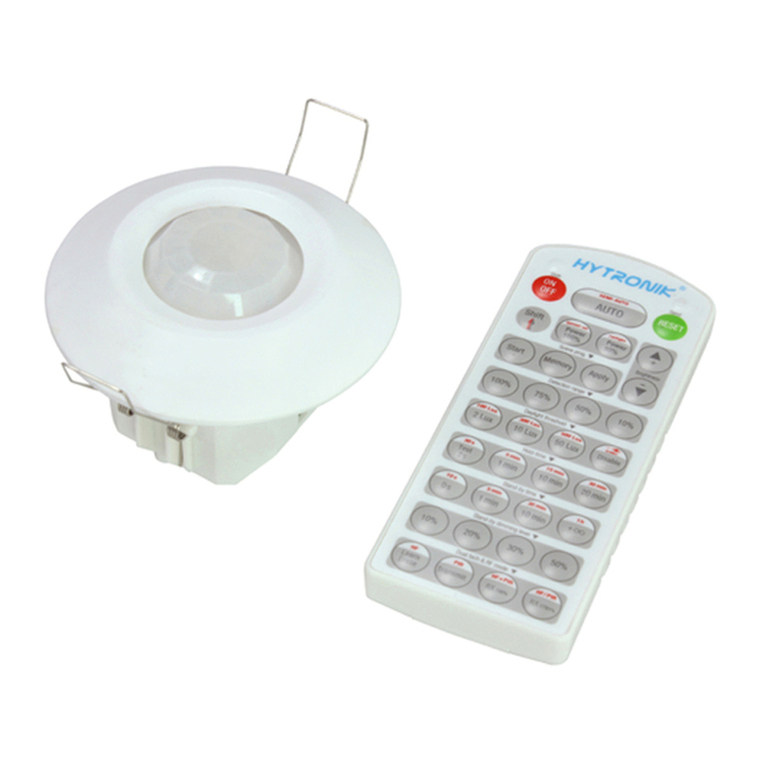
Hytronik
Hytronik HIR21 Installation and instruction manual
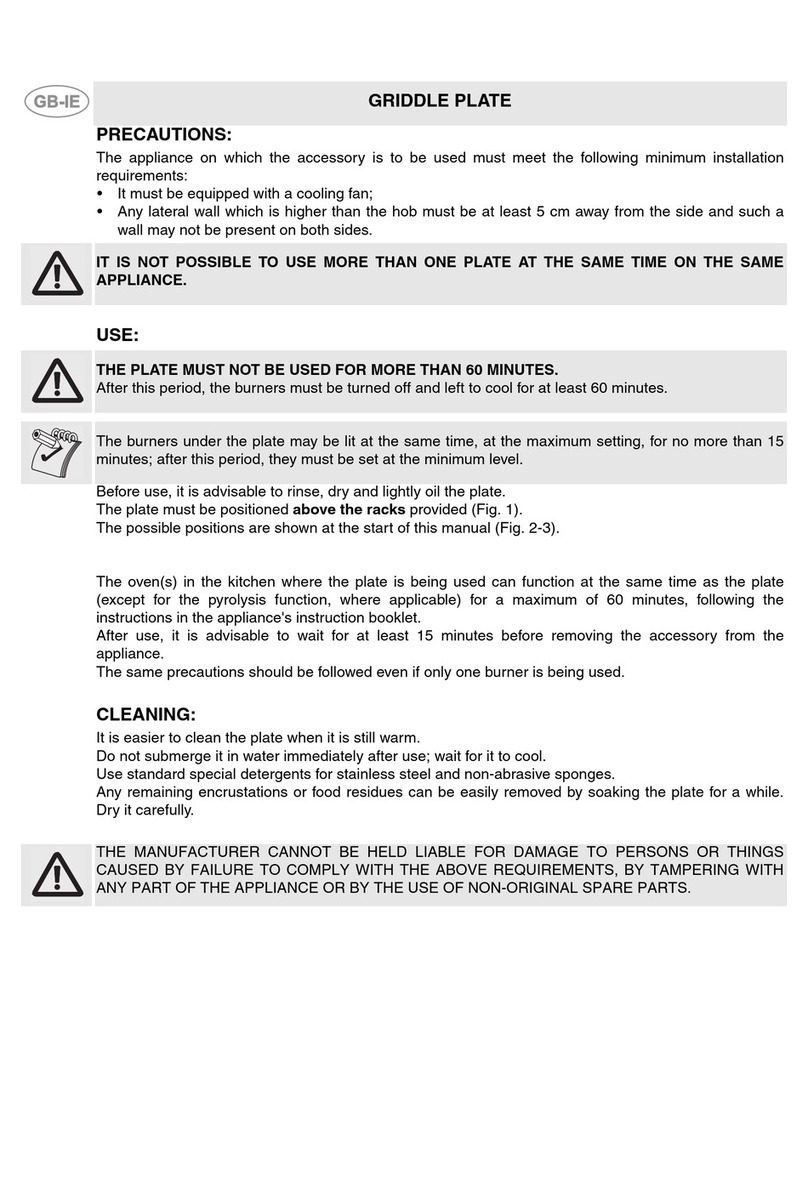
Smeg
Smeg Griddle Plate TBX6090 owner's manual
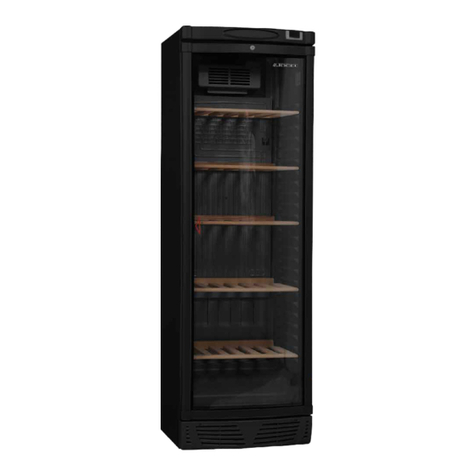
Jocel
Jocel JAG003447 instruction manual

Aaeon
Aaeon PCM-6898 manual
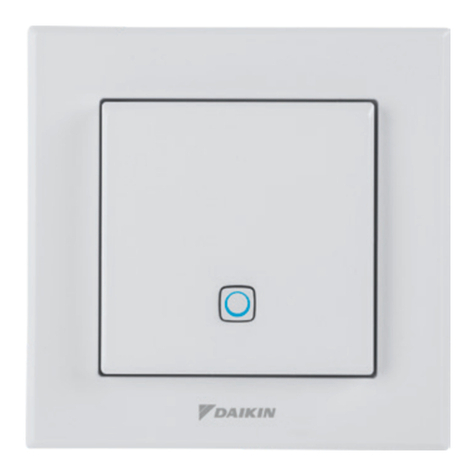
Daikin
Daikin homecontrols EKRSENDI1BA Installer and user guide
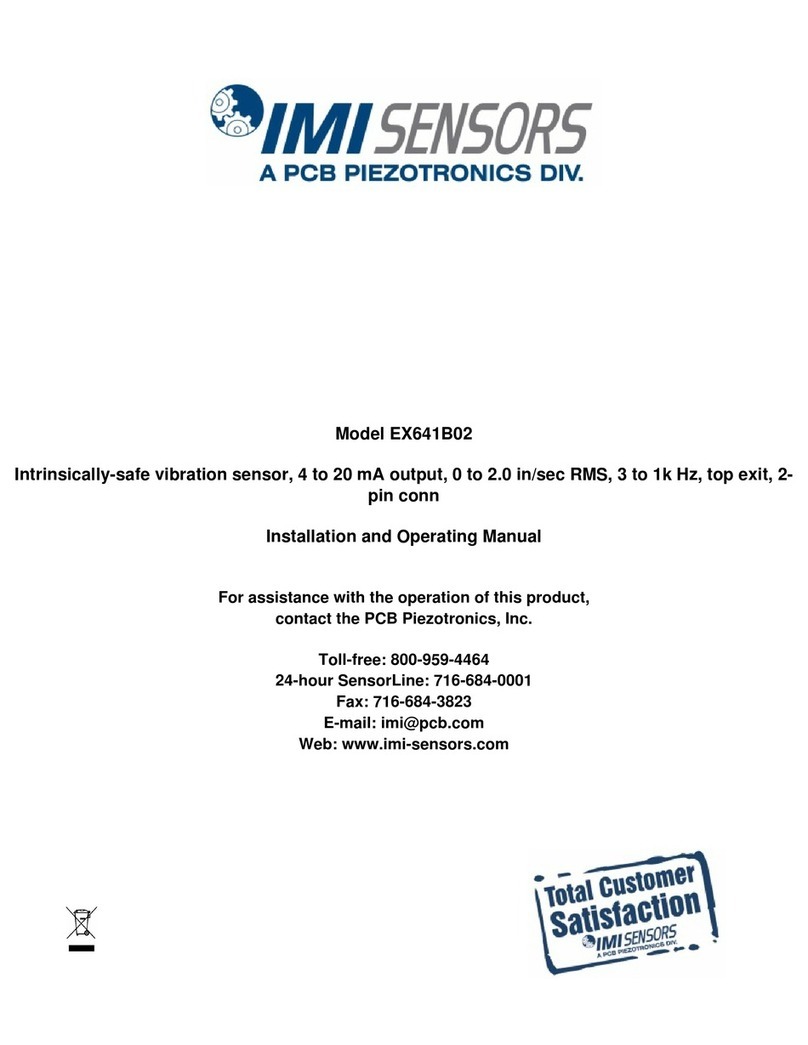
PCB Piezotronics
PCB Piezotronics IMI SENSORS EX641B02 Installation and operating manual
